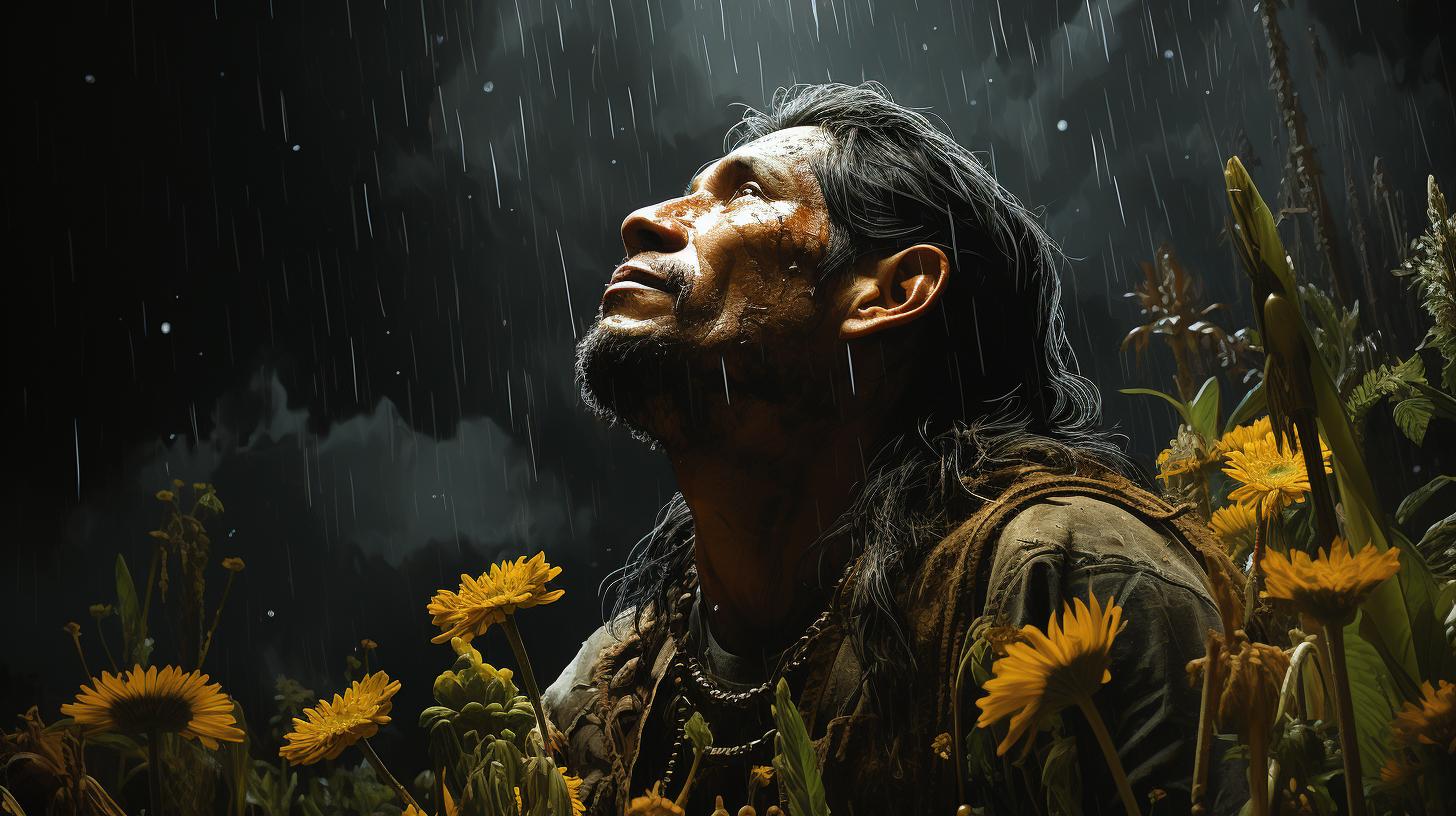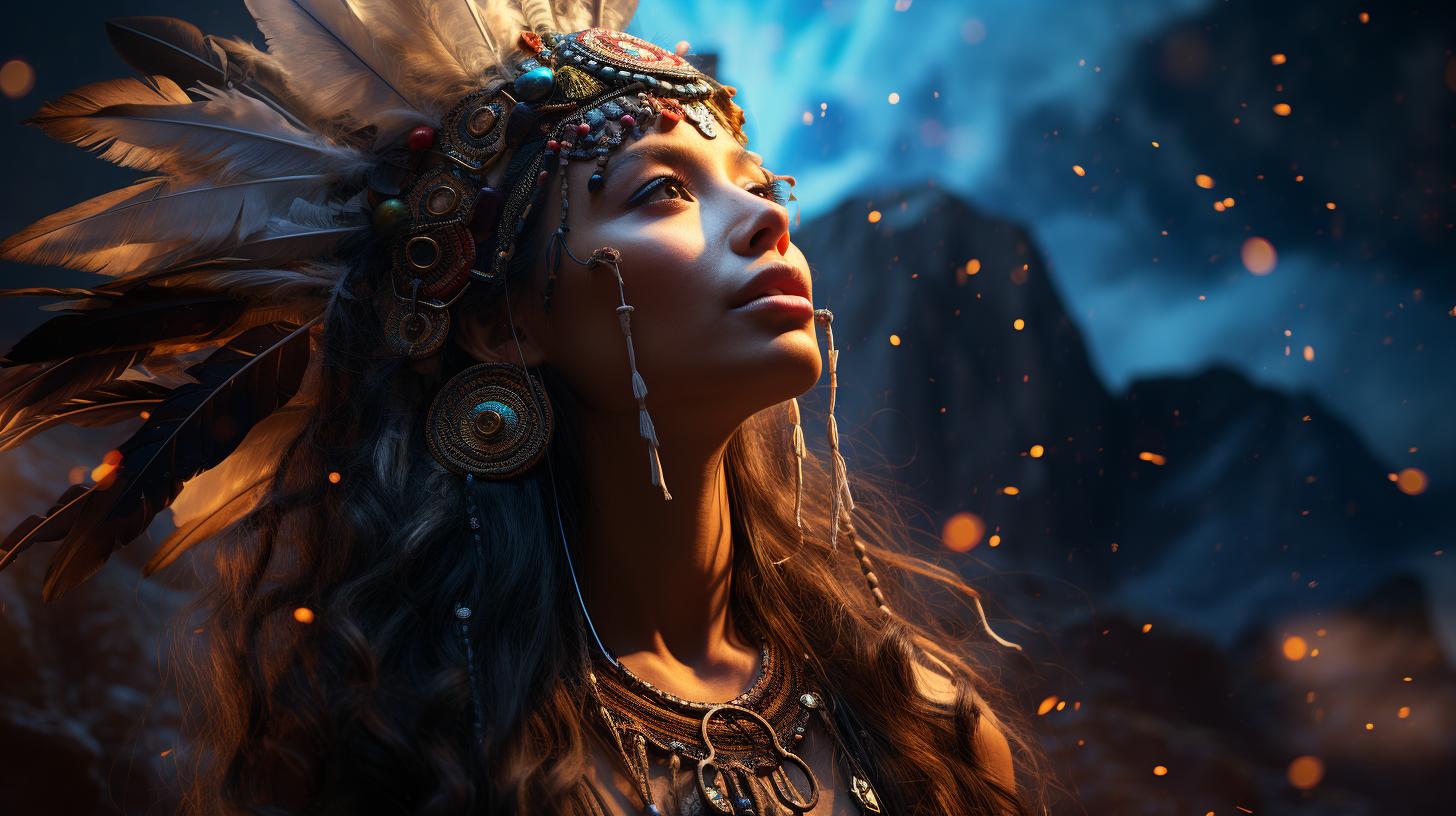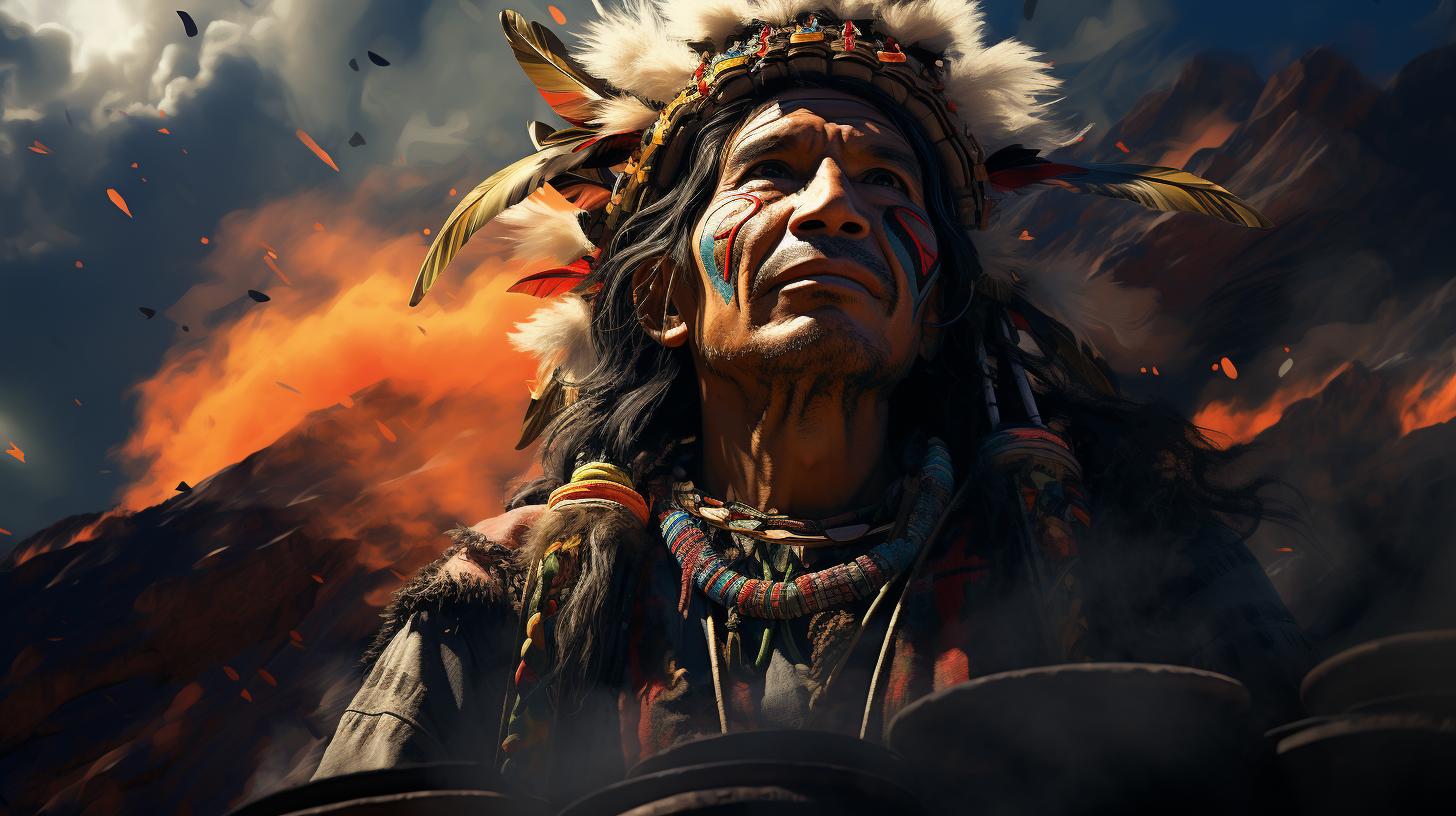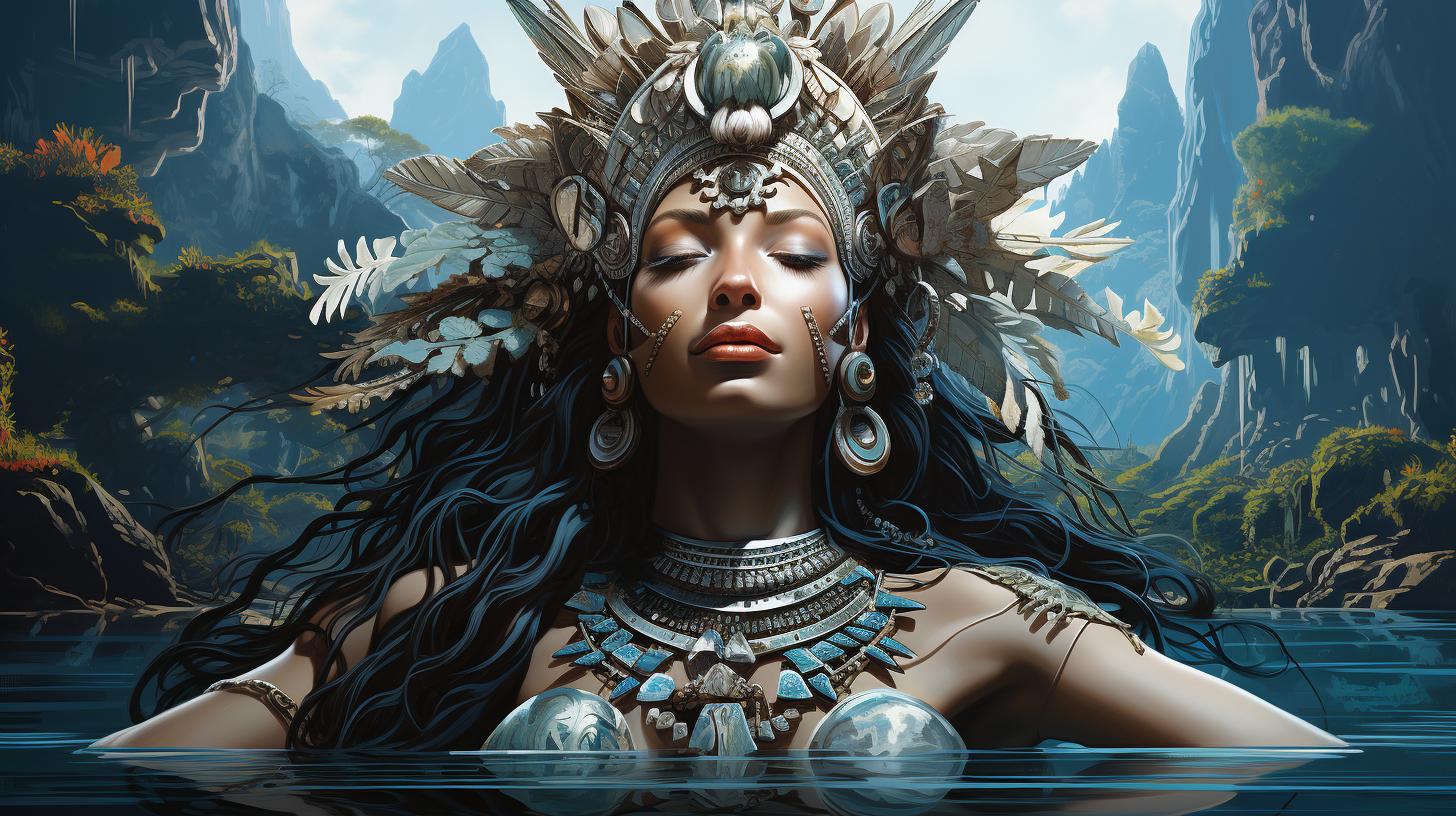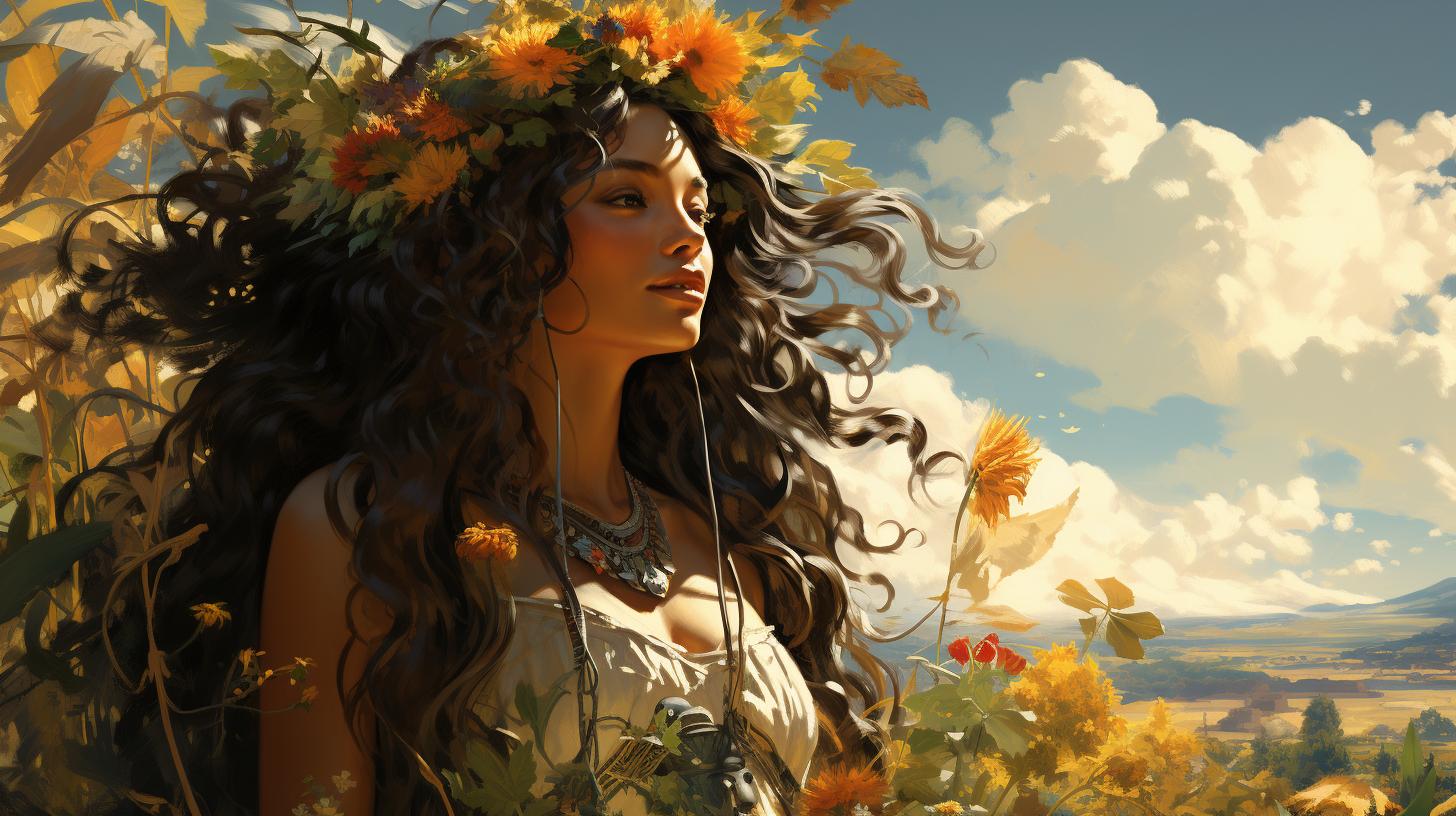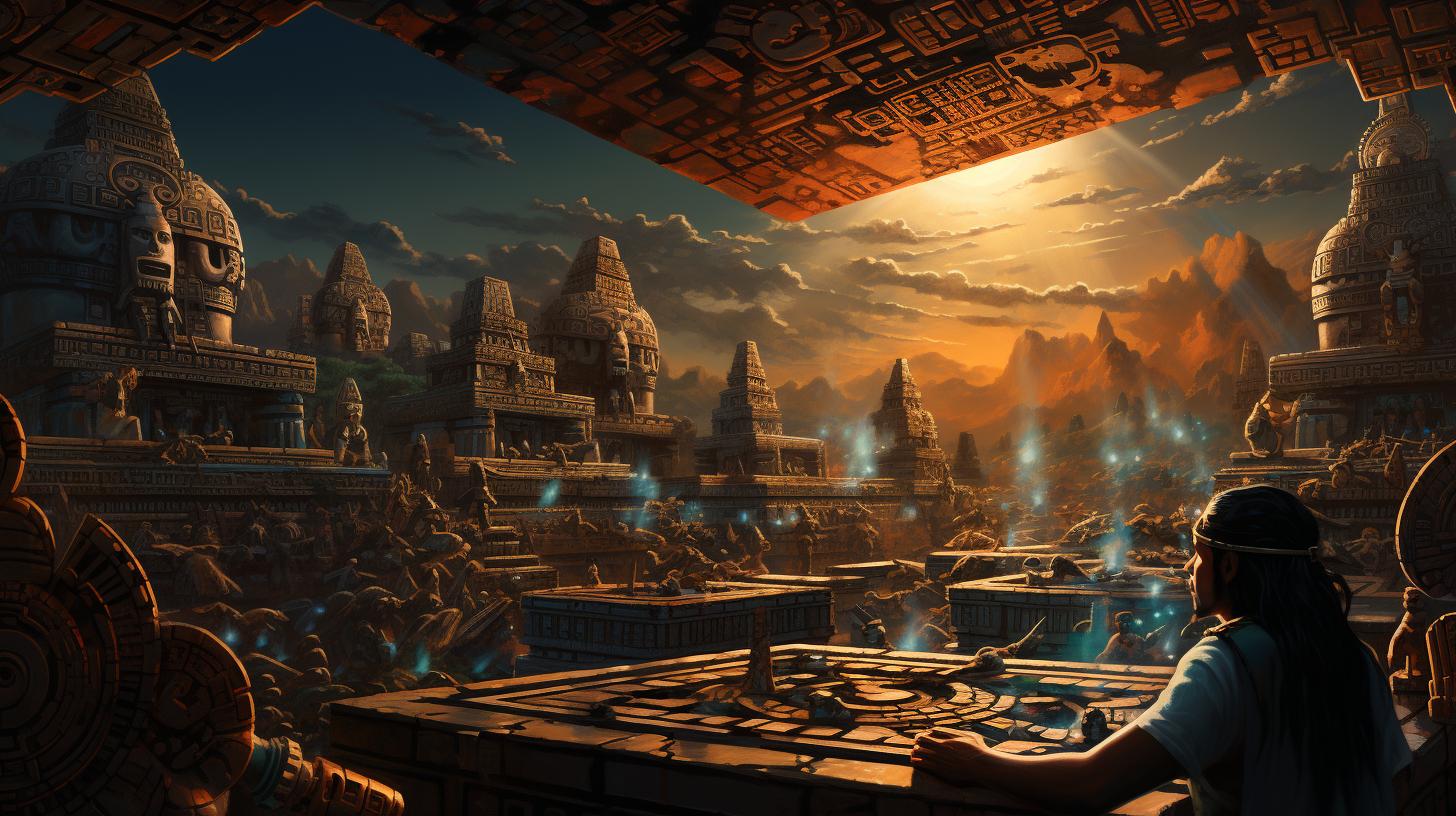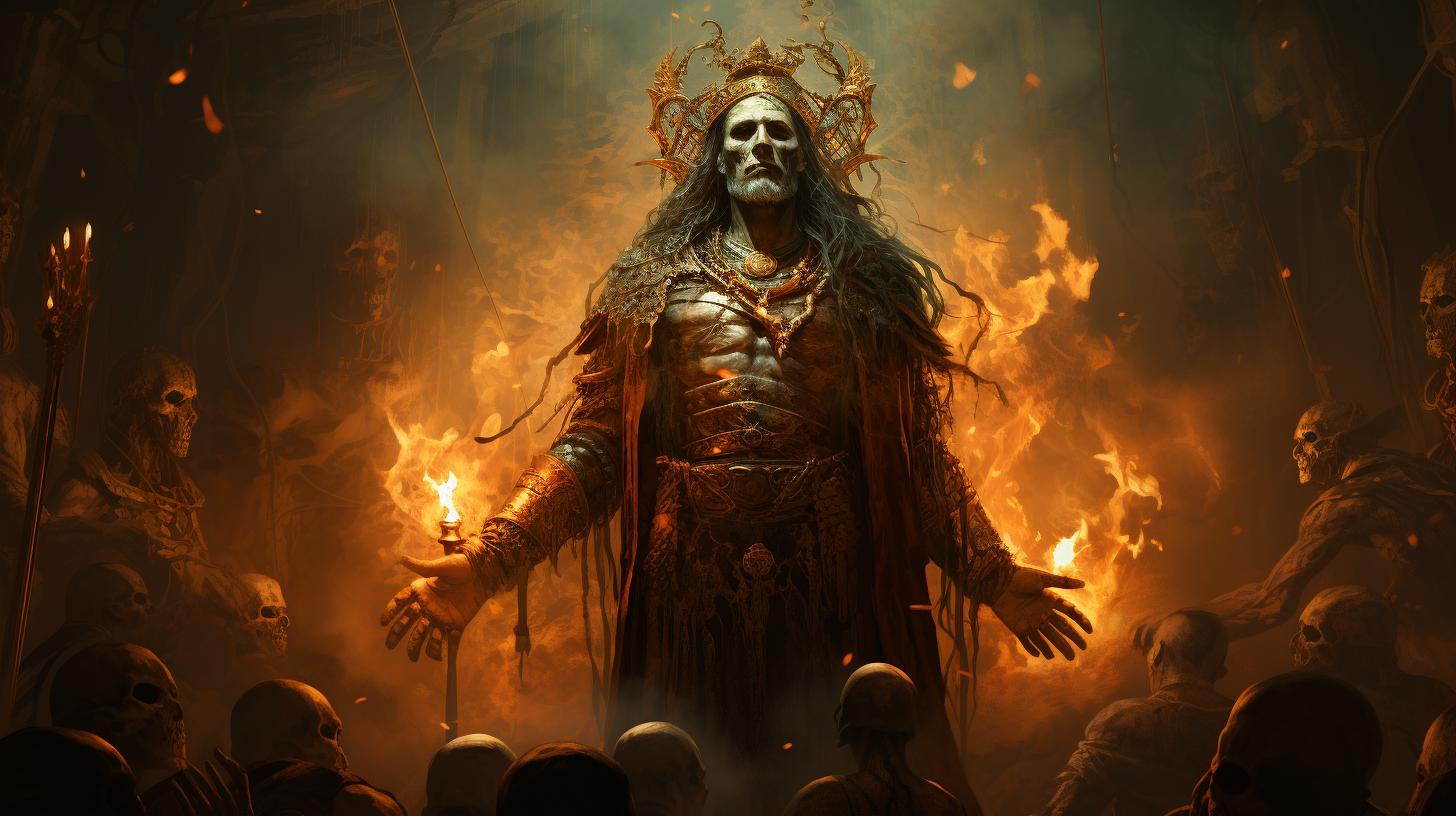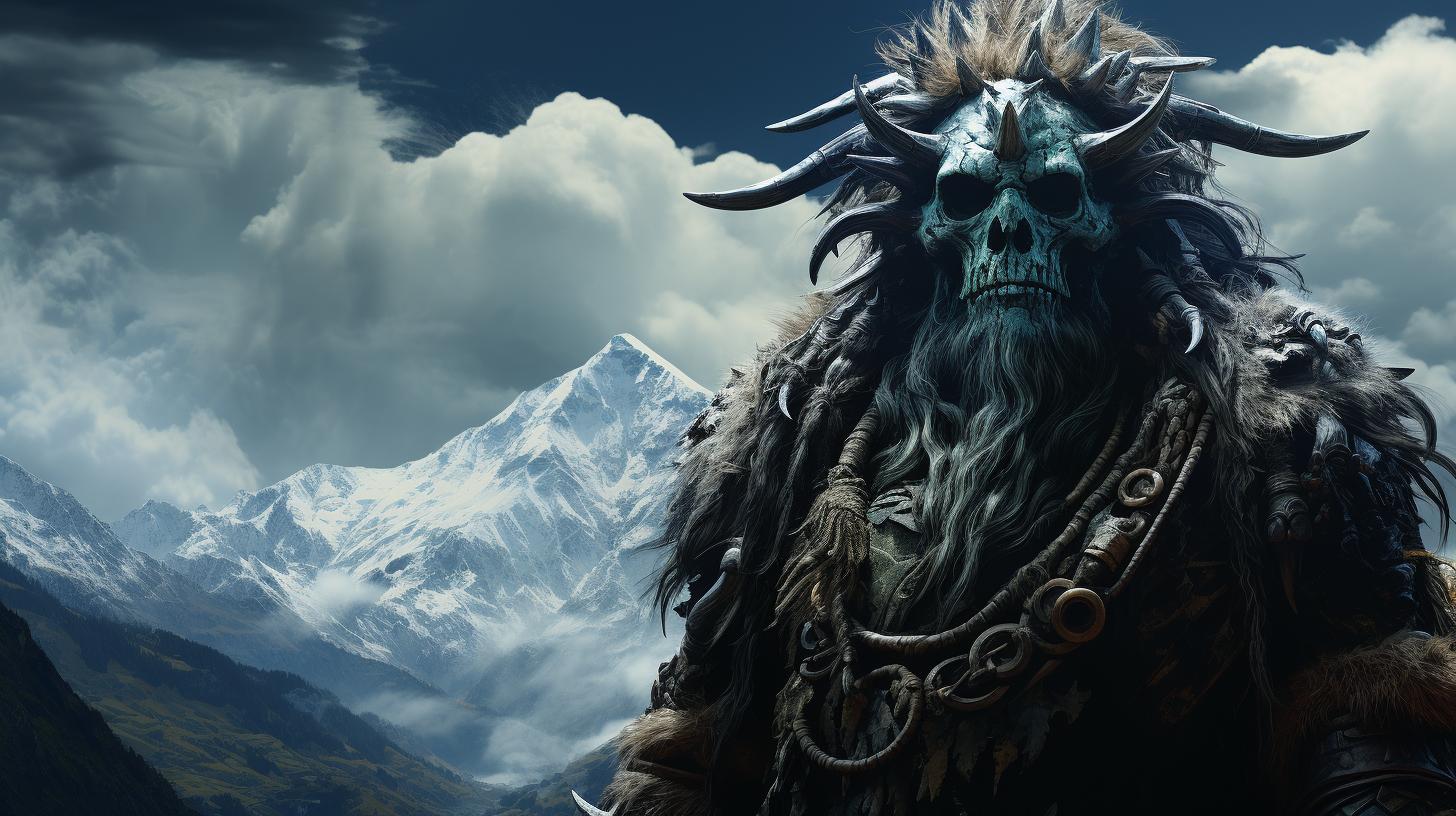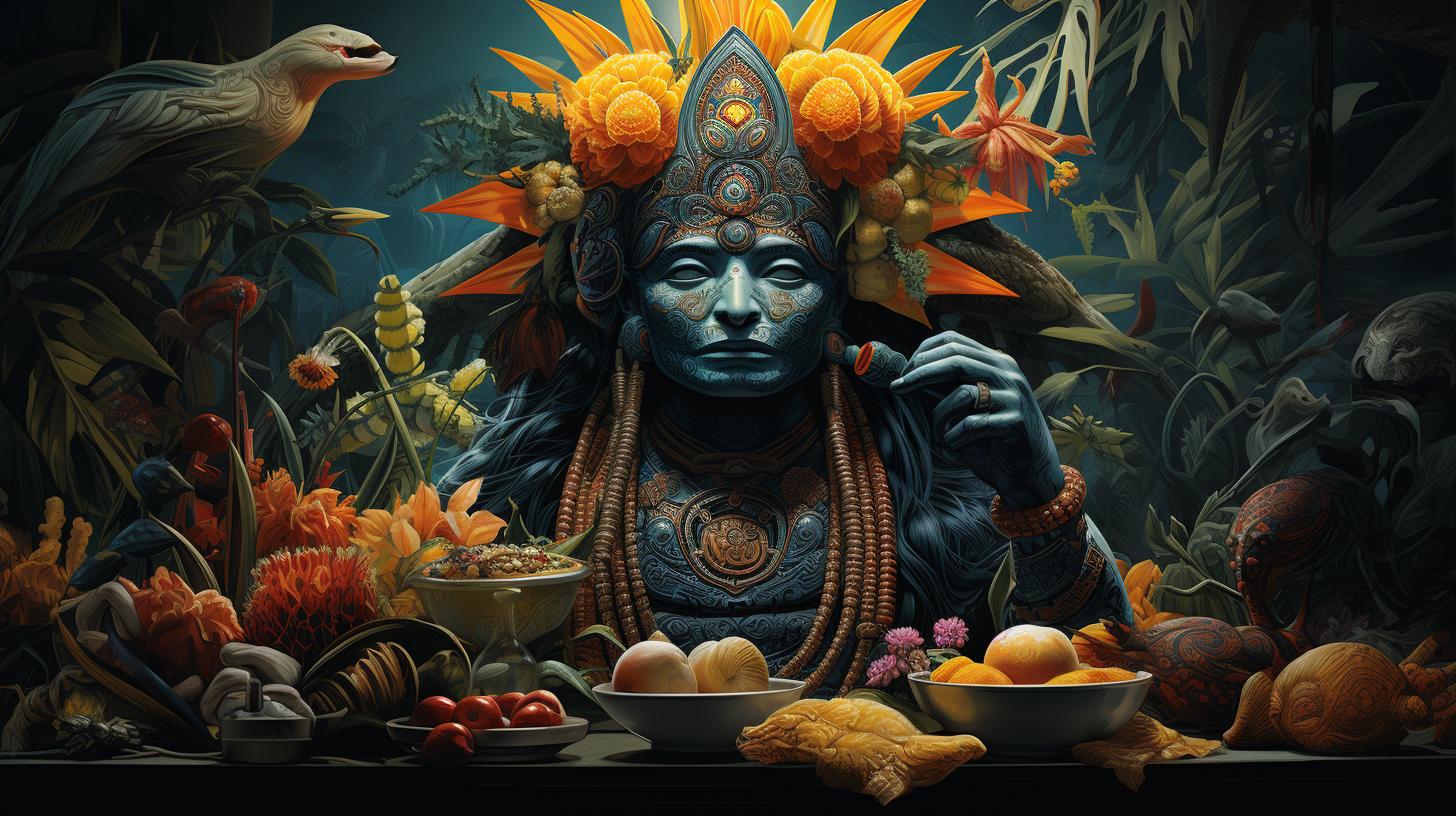Parya Inca: The Rain God of the Inca Civilization
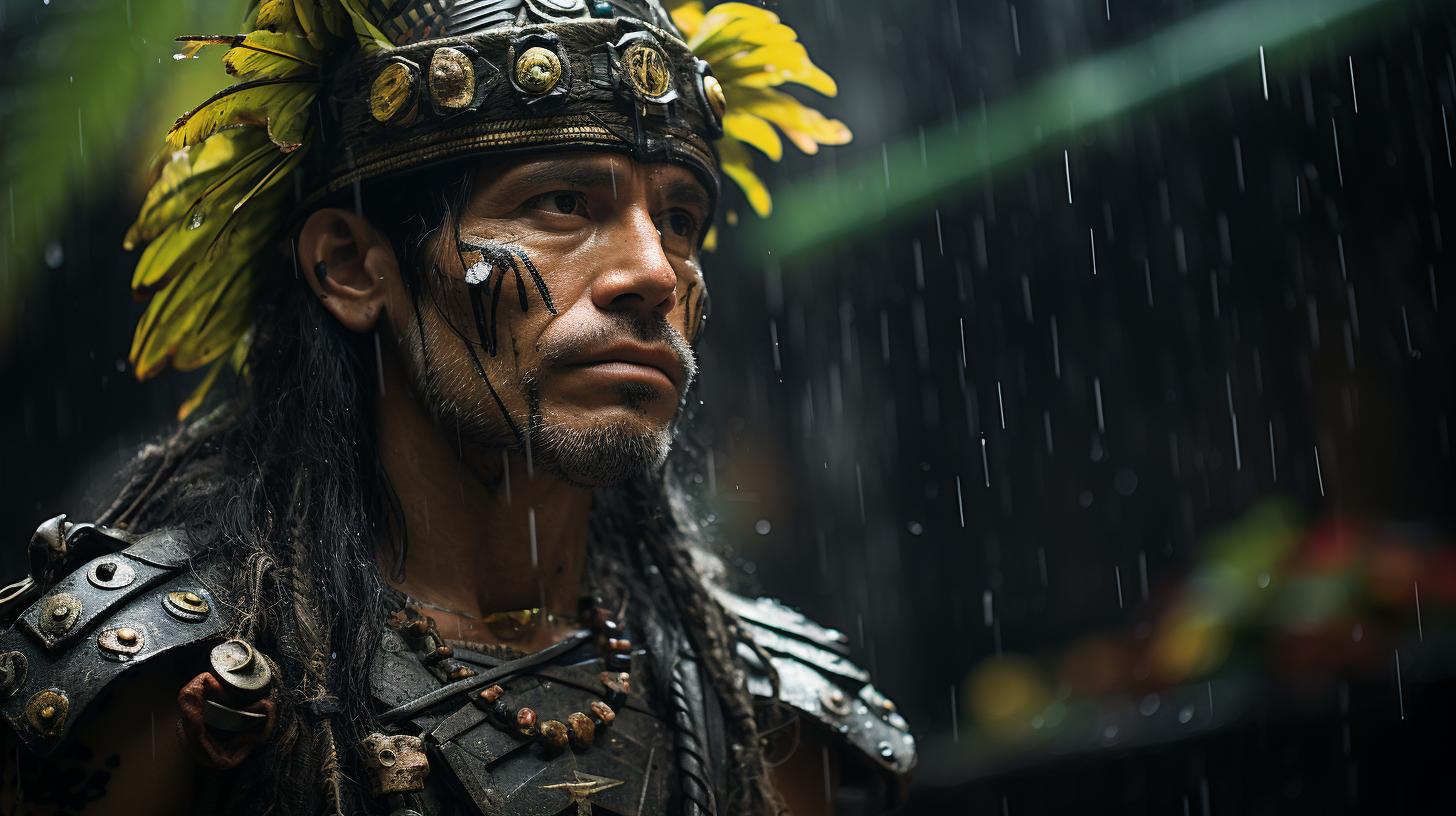
Parya Inca, also known as the Rain God in Inca mythology, held a significant role in their belief system. Represented as a warrior adorned in radiant attire and wielding a sling, Parya Inca controlled thunderstorms and rainfall.
Apart from weather control, Parya Inca was also associated with war. To appease the deity, offerings and sacrifices, including llama fetuses, were made. This article explores the Inca civilization’s intricate religious beliefs, their diverse pantheon of gods and goddesses, and the connection between Parya Inca and their agricultural practices and warfare.
It also touches upon the influence of pre-Inca indigenous beliefs in the Andean region.
Basic Beliefs of the Inca Civilization
The Inca civilization had a rich belief system that encompassed various gods, goddesses, and mythical stories. Their religious practices were deeply intertwined with their daily lives, rituals, and agricultural activities.
The Inca Pantheon: Gods and Goddesses
The Inca pantheon included a diverse array of deities, each associated with different aspects of life and nature.
These powerful entities were revered and worshipped by the Inca people.
Illapa: God of Rain, Thunder, and Lightning
Illapa held immense importance in Inca mythology as the god of rain, thunder, and lightning. Depicted as a warrior clad in radiant garments, he wielded a sling that unleashed thunderous booms and his attire shimmered like lightning bolts.
Illapa’s control over weather phenomena played a vital role in agricultural outcomes, as rainfall was crucial for crop fertility.
Inti and Mama Quilla: Gods of the Sun and Moon
The Inca worshipped Inti as the sun god and Mama Quilla as the moon goddess.
They were considered essential celestial beings associated with life, light, and growth. The sun provided warmth and sustenance, while the moon governed the cycles of time and influenced agricultural activities.
Pachamama: Goddess of the Earth and Fertility
Pachamama was revered as the goddess of the earth and fertility.
The Inca believed that she granted fertility to their agricultural lands and nurtured all living beings. They admired and respected the bountiful nature and life-giving qualities of the earth.
Viracocha: The Creator God
Viracocha held a prominent position as the creator god in Inca cosmology.
He was believed to have shaped the world and all living beings. Viracocha was associated with the origins of civilization and represented the highest divine power among the Inca deities.
Mythology and Legends in Inca Beliefs
Inca mythology comprised a rich tapestry of stories and legends that explained the origins of the world and the Inca civilization. These myths provided spiritual and cultural guidance, offering insights into the Inca’s perception of their place in the universe.
The Creation Myth in Inca Culture
According to Inca mythology, their origin traced back to the creation myth of Viracocha. It was believed that Viracocha emerged from the waters of Lake Titicaca and created the sun, moon, stars, and the first human beings, eventually leading to the establishment of the Inca Empire.
The Role of Animals in Inca Mythology
Animals held significant symbolism in Inca mythological narratives. They were considered messengers between the human and spiritual realms. For instance, dogs served as intermediaries, while bears represented strength and courage. Foxes were regarded as intelligent and cunning creatures, symbolizing cleverness in Inca culture.
In summary, the Inca civilization had a complex belief system rooted in their daily lives and rituals. Their pantheon of gods and goddesses, including Illapa, Inti, Mama Quilla, Pachamama, and Viracocha, represented various aspects of nature, fertility, and creation.
Their myths and legends provided spiritual and cultural guidance, shaping the Inca’s perception of their place in the world.
Deployments of Parya Inca
Parya Inca, as the god of rain, held great significance in the agricultural practices of the Inca civilization. The prosperity of their crops relied heavily on rainfall, making Parya Inca a central figure in their agricultural strategy.
The Importance of Rain in Inca Agriculture
Inca Agricultural Practices: The Inca people were skilled farmers, working with terraces, irrigation systems, and crop rotation techniques to maximize their agricultural output. However, their success greatly depended on the availability of water, especially rainfall.
Role of Parya Inca in Agriculture: Parya Inca was believed to control the rain and ensure its timely arrival, nurturing the crops with the water they needed to grow. The Inca farmers, recognizing the god’s crucial role, revered and respected Parya Inca, offering prayers and performing rituals to invoke his blessings.
Agricultural Festivals: The Inca held agricultural festivals, such as Capacocha, where they offered elaborate ceremonies and sacrifices to please Parya Inca and ensure an abundant harvest season. These rituals were seen as a means to establish a harmonious relationship with the god of rain.
Rituals and Offerings to Please Parya Inca
Sacrificial Offerings: To appease Parya Inca, the Inca civilization performed various rituals and made offerings. Among the sacrificial offerings were fetuses of llamas, a significant animal in Inca culture. This act symbolized their willingness to sacrifice for the greater good, seeking the favor and benevolence of Parya Inca.
Rain Dance Ceremonies: The Inca also conducted rain dance ceremonies, where individuals performed intricate and rhythmic dances, accompanied by music and chants, to call upon the rain god. These ceremonies aimed to demonstrate the Inca’s devotion and their desire for Parya Inca’s beneficial intervention in their agricultural endeavors.
Parya Inca and the Connection to War
Association with Warfare: Beyond his role in agriculture, Parya Inca was also considered the god of war in the Inca pantheon. This dual association suggests a connection between the rain and its potential destructive power, similar to the ravaging effects of war.
The Inca believed that Parya Inca’s influence extended to both natural and man-made phenomena.
Rituals for Victory: In times of war, the Inca would perform specific rituals and make offerings to seek Parya Inca’s support and ensure success in battle.
They believed that by appeasing the rain god, Parya Inca would grant them favorable conditions for victory, such as strategic rainfall or thunderstorms that could disrupt their enemies.
In conclusion, Parya Inca played a crucial role in the agricultural practices of the Inca civilization.
Through rituals, offerings, and agricultural festivals, the Inca sought to maintain a harmonious relationship with the god of rain, believing that his benevolence would ensure favorable growing conditions for their crops.
Furthermore, Parya Inca was also closely associated with war, showcasing the Inca’s belief in his influence over both natural and human affairs.
Pre-Inca Indigenous Beliefs in the Andean Region
Pre-Inca indigenous beliefs in the Andean region played a crucial role in shaping the mythology and religious practices of the Inca civilization. These diverse cultures had their own pantheon of gods and spirits, which influenced and merged with the Inca deities.
Andean Indigenous Gods and Spirits
The Andean indigenous people worshipped a variety of gods and spirits that represented different aspects of their lives. These entities embodied nature, animals, fertility, and other essential elements. Each deity held a distinctive significance and was revered for its unique qualities.
Influence of Pre-Inca Cultures on Inca Mythology
The Inca civilization was not isolated from the cultural heritage of the pre-Inca cultures in the Andean region. As they expanded their empire, the Inca absorbed and integrated the beliefs and mythologies of the conquered peoples, resulting in a complex religious tapestry.
The pre-Inca cultures, with their rich mythological traditions, contributed to the diverse pantheon of Inca gods and goddesses.
The Andean Cosmovision: Relationship with Nature
The Andean people had a deep connection with their natural surroundings, viewing nature as a living entity. This cosmovision emphasized the interdependence between humans, deities, and the environment. They believed in reciprocity with nature and conducted rituals and ceremonies to maintain harmony and balance in the world.
The Andean indigenous beliefs laid the foundation for the Inca’s spiritual practices and shaped their understanding of the divine. By acknowledging the influence of pre-Inca cultures, we gain a deeper appreciation for the intricate tapestry of Inca mythology and the cultural mosaic of the Andean region.
The Inca Civilization and their Beliefs
The Inca civilization held a profound reverence for their spiritual beliefs, which were interwoven into every aspect of their daily lives. These beliefs shaped their worldview, rituals, and architectural wonders. Let’s explore some key aspects of the Inca civilization and their profound religious practices.
Cuzco: The Center of the Inca World
Cuzco, the capital city of the Inca Empire, held immense significance in their religious beliefs. The Incas believed that Cuzco was the literal navel of the world, the place where their civilization originated.
They constructed magnificent temples and sacred sites in Cuzco to honor their gods and perform rituals. The city itself became a living testament to their deep spiritual connection.
Machu Picchu: Sacred Retreat of Inca Rulers
Machu Picchu, the awe-inspiring citadel located high in the Andes mountains, was regarded as a sacred retreat for Inca rulers.
This magnificent architectural marvel was believed to have served sacred and ceremonial purposes, closely tied to the Inca religious practices. Its remote location and intricate construction showcased the Inca’s harmonious relationship with nature and their gods.
Significance of the Temple of Illapa in Sacsayhuaman
Sacsayhuaman, an impressive fortress located near Cuzco, housed the Temple of Illapa, dedicated to the worship of Illapa, the god of rain, thunder, and lightning. This temple held immense importance as it symbolized the Inca’s reliance on and reverence for the forces of nature.
The Inca people believed that by appeasing Illapa through offerings and rituals, they could ensure abundant rainfall and favorable agricultural conditions.
Lake Titicaca: Birthplace of the Inca Civilization
Lake Titicaca, the highest navigable lake in the world, held profound spiritual significance for the Inca civilization. According to their beliefs, this majestic lake served as the birthplace of the Inca civilization.
Numerous myths and legends were associated with Lake Titicaca, and the Incas conducted rituals and ceremonies to honor its sacredness. It represented their deep connection to water, fertility, and the cycle of life.
In conclusion, the Inca civilization’s beliefs were deeply ingrained in their everyday lives and influenced their religious practices, rituals, and architecture. Cuzco served as the epicenter of their spiritual universe, while Machu Picchu provided a sacred retreat for their rulers.
The Temple of Illapa in Sacsayhuaman symbolized their reverence for natural forces, and Lake Titicaca held immense mythological and spiritual significance. Through their beliefs, the Inca civilization showcased their profound connection with the divine and their understanding of the intricate balance of the natural world.











